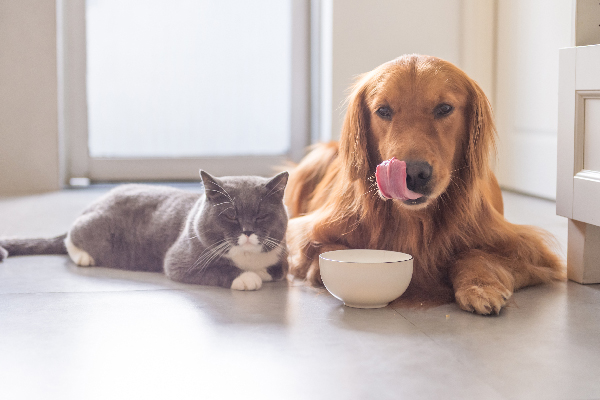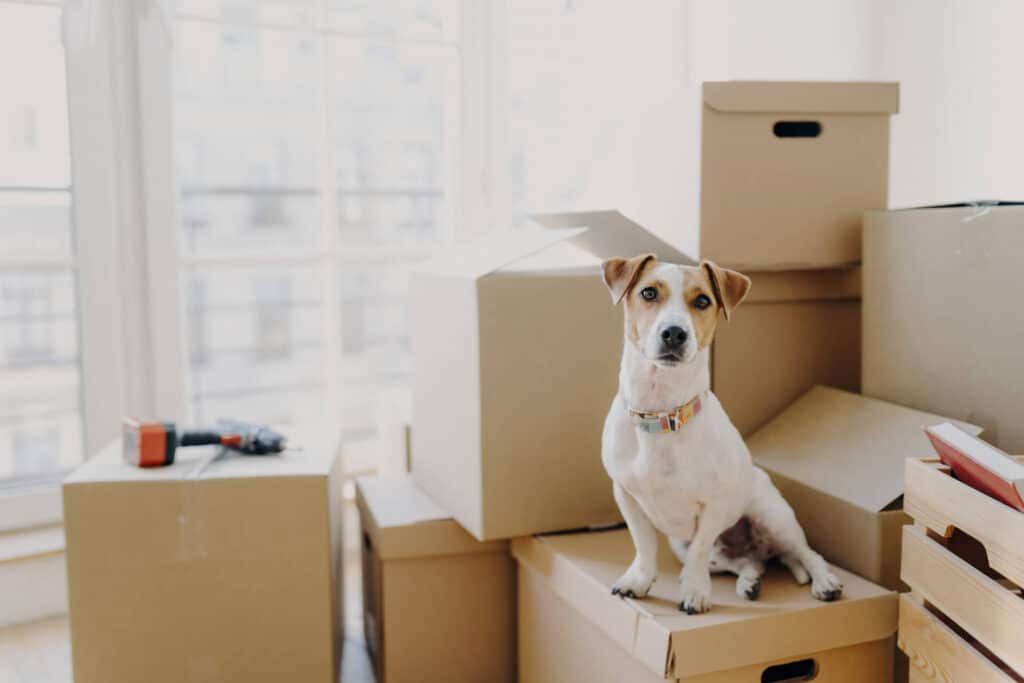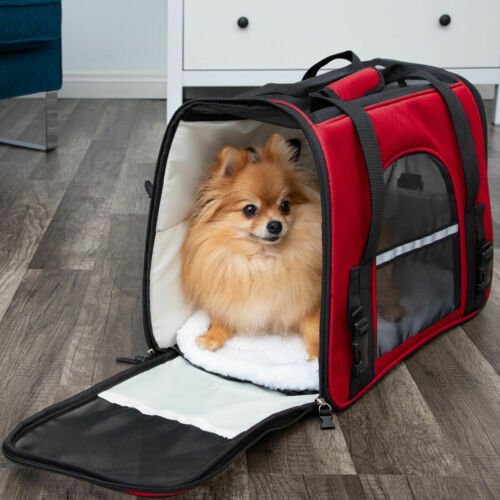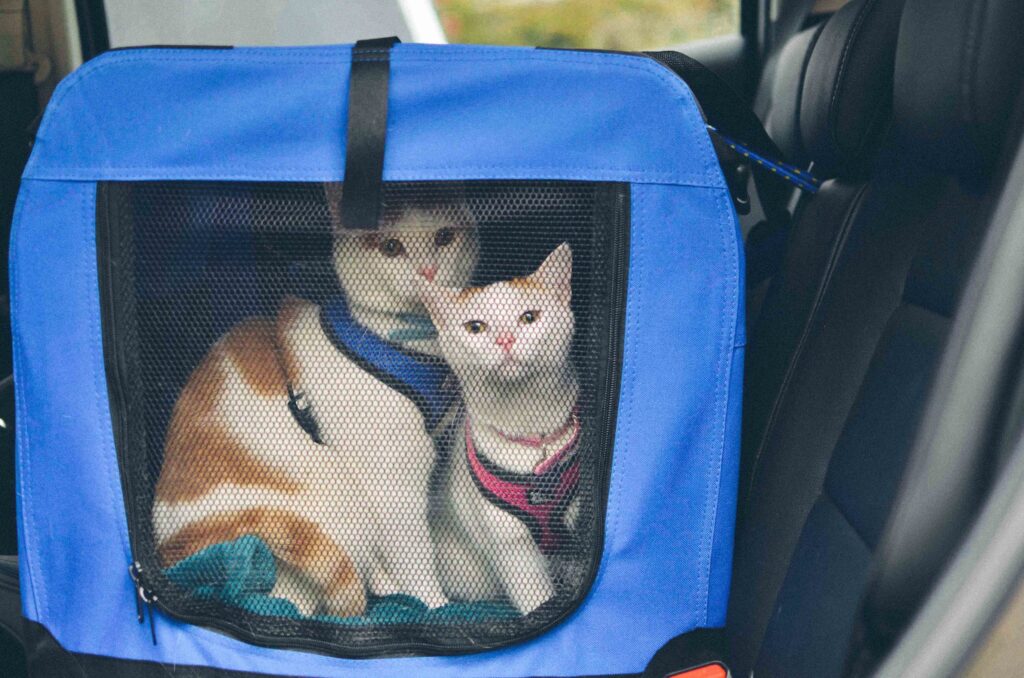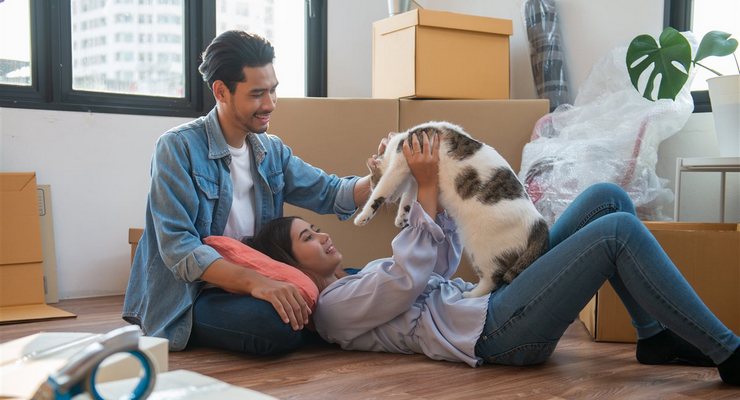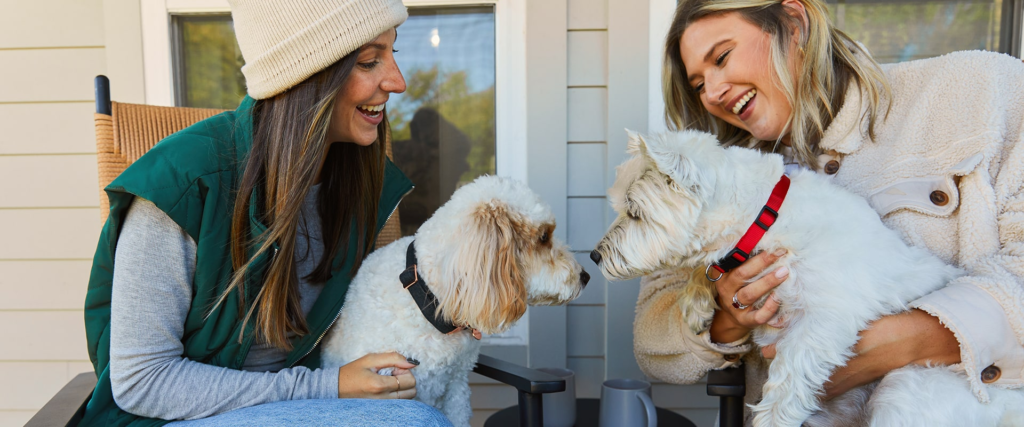Whether you are going just across town or headed to a new neighborhood many miles away, moving can be a challenging and stressful experience, not only for you but also for your beloved pets.
It’s essential to keep your furry friends safe, healthy, and comfortable during the moving process. To help you plan a pet-friendly move, I’ve put together this comprehensive list of 50 top tips from my point of view as both a professional organizer and a pet parent.
If you follow these suggestions, they really will help to ensure an organized, stress-free move for both you and your fur kids!
Before the Move
- Update pet identification: Make sure your pet’s collar has an updated ID tag with your new address and phone number.
- Microchip your pet: If your pet isn’t already microchipped, consider doing so before the move for added security.
- Schedule a vet checkup: Have your pet examined by a veterinarian to ensure they’re healthy and up-to-date on vaccinations before moving.
- Obtain health records: Request a copy of your pet’s medical records from your vet to take with you to your new home.
- Research pet regulations: Investigate any specific pet regulations, like breed restrictions or licensing requirements, in your new community.
- Find a new vet: Research and choose a new veterinarian in your new area.
- Create a moving plan: Develop a plan for moving day, including how your pets will be transported and where they’ll stay during the move.
- Keep pets’ routines consistent: Maintain your pets’ regular feeding and exercise routines leading up to the move.
- Get pets familiar with their carriers: Encourage your pets to spend time in their carriers or crates before the move to reduce anxiety.
- Pack a pet essentials bag: Assemble a bag with essential pet items, like food, water, medication, and a favorite toy, to keep with you during the move.
Preparing Your Pets for the Move
- Gradually introduce packing materials: Slowly introduce boxes, packing tape, and other moving materials into your home to acclimate your pets to the upcoming changes.
- Keep pets away from the packing chaos: Create a quiet, safe space for your pets to retreat to while packing.
- Limit outdoor time for indoor pets: Keep indoor pets inside as much as possible to reduce the risk of them becoming stressed and running away.
- Use calming products: Consider using calming products like pheromone sprays or calming collars to help ease your pet’s anxiety during the move.
- Exercise your pets: Ensure your pets get plenty of exercise before the move to help reduce stress and burn off excess energy.
Moving Day
- Secure your pets: Keep your pets in a secure room or crate while movers are in your home to prevent escapes or injuries.
- Communicate with movers: Inform your movers about your pets and any special precautions they should take.
- Monitor your pets’ stress levels: Keep an eye on your pets for signs of stress or anxiety and take steps to comfort them if needed.
- Keep pets on a leash or in a carrier: Always have your pets leashed or secured in a carrier when outside during the move.
- Use pet-friendly travel accommodations: If your move requires overnight stays, book pet-friendly hotels in advance.
Transporting Your Pets
- Choose the right carrier: Select a carrier that’s appropriately sized for your pet, with enough space for them to stand, turn around, and lie down comfortably.
- Line the carrier with a familiar item: Place a favorite blanket or toy in the carrier to provide comfort and familiarity.
- Secure the carrier: Ensure the carrier is properly secured in your vehicle to prevent it from shifting during the move.
- Keep pets cool: Make sure your pets are kept at a comfortable temperature during transport, and never leave them in a parked car unattended.
- Provide fresh water: Keep fresh water available for your pets during the journey.
- Offer bathroom breaks: Give your pets opportunities to relieve themselves during the trip.
- Avoid feeding pets during travel: Limit food intake before and during the journey to prevent motion sickness and digestive issues.
- Be mindful of open windows: Keep windows closed or only slightly open to prevent pets from attempting to jump out.
- Use pet seat belts: If your pet is not in a carrier, use a pet seat belt or harness to keep them secure in the car.
- Stay calm: Pets can pick up on your stress, so try to remain calm and composed during the move to help your pet feel more relaxed.
Arriving at Your New Home
- Set up a safe space: Create a quiet, comfortable area in your new home for your pets to explore and settle into.
- Pet-proof your new home: Check for potential hazards, like toxic plants or open windows, and secure your new home to keep your pets safe.
- Unpack your pet’s belongings first: Set up your pet’s bed, toys, and food and water dishes as soon as you arrive.
- Keep routines consistent: Maintain your pet’s regular feeding and exercise schedules to help them adjust to their new environment.
- Monitor your pets for signs of stress: Keep an eye on your pets for any behavioral changes or signs of anxiety, and consult a veterinarian if needed.
Getting Settled
- Gradually introduce new spaces: Allow your pets to explore their new surroundings at their own pace, gradually introducing them to different rooms and areas.
- Provide plenty of attention: Offer reassurance and comfort to your pets as they adjust to their new home.
- Use positive reinforcement: Reward your pets with treats and praise as they explore and become comfortable in their new environment.
- Be patient: Give your pets time to adjust to their new surroundings and don’t rush the process.
- Supervise outdoor time: Keep a close eye on your pets when they’re outside in your new yard, as they may try to escape or become disoriented.
Introducing Pets to New Neighbors and Pets
- Leash your pets: Keep your pets leashed when meeting new neighbors and their pets to prevent any aggressive behavior or potential injuries.
- Use treats and praise: Reward your pets with treats and praise when they interact positively with new people and animals.
- Take it slow: Gradually introduce your pets to new faces, allowing them to become comfortable with each new encounter.
- Be mindful of body language: Pay attention to your pets’ body language during introductions and intervene if they become anxious or aggressive.
Post-Move
- Register your pets: Update your pet’s registration with your new city or town, if required.
- Schedule a vet appointment: Take your pet to their new veterinarian for a checkup and to establish a relationship.
- Update microchip information: Notify your pet’s microchip company of your new address and contact information.
- Join local pet groups: Connect with local pet parents and groups to find resources, events, and support in your new community.
- Explore pet-friendly locations: Discover nearby parks, trails, and other pet-friendly locations to enjoy with your pets.
- Be vigilant about escape attempts: Monitor your pets closely during the first few weeks in your new home, as they may be more prone to trying to escape or wander off.
Moving with pets can be a challenging experience, but with these 50 top tips, you can ensure your pets are safe, healthy, and comfortable during the process. By planning ahead, staying organized, and prioritizing your pets’ needs, you can create a smooth and stress-free transition for both you and your furry friends. As you settle into your new home, be patient and attentive to your pets’ needs, and they will adjust to their new environment in no time.
For a seamless moving experience, consider taking advantage of Just Organized by Taya’s professional organization and moving services. Our team of experts will help you pack and unpack and organize your new home, ensuring your belongings and pets are well-cared for throughout the process. Don’t hesitate to contact us for assistance with your upcoming move. Let Just Organized by Taya make your move with pets an organized, worry-free experience!
- Top 10 Tips for Linen Closet Organization - October 16, 2025
- The “House Purse”: The Viral Trend That Proves Organization is Self-Care - October 14, 2025
- A Mental Health Month Guide to Decluttering Your Life (And Your Home) - October 9, 2025

